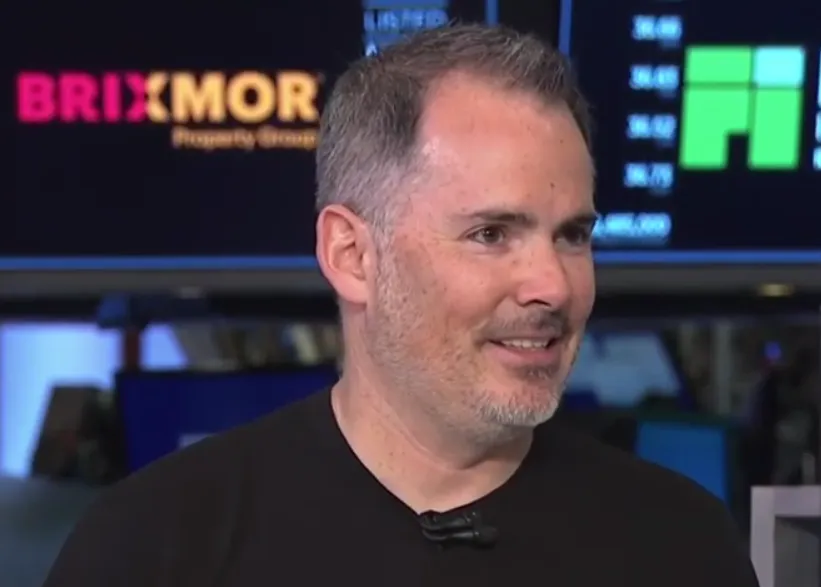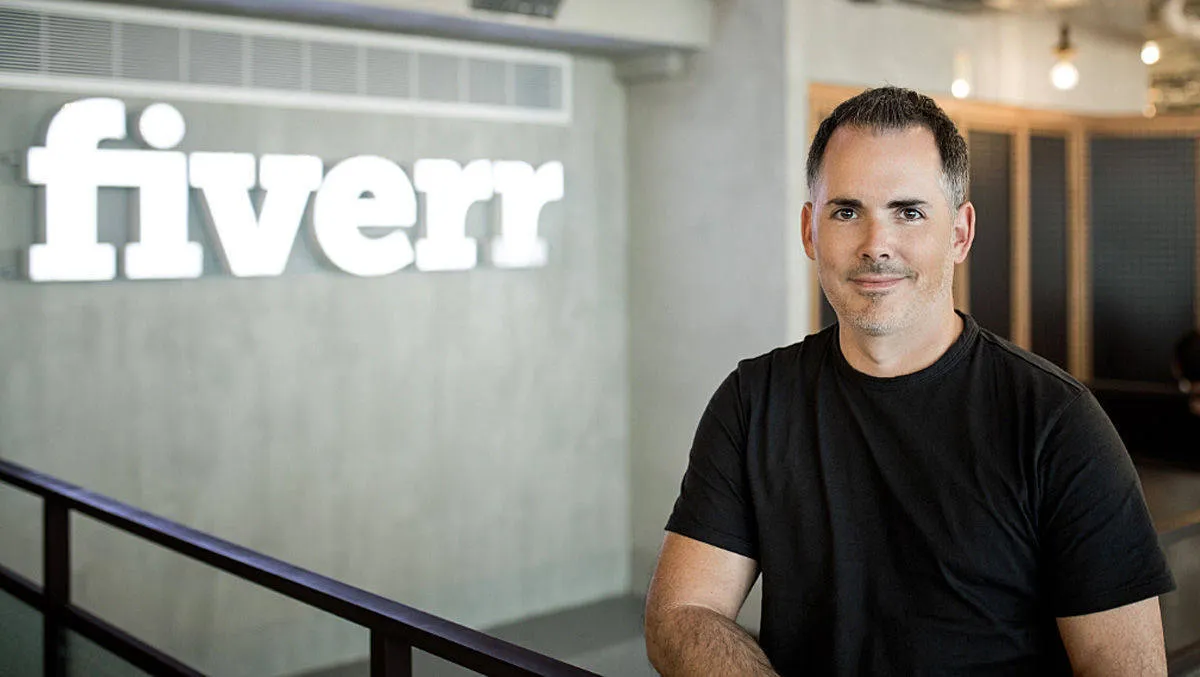Have you ever wondered who is behind the popular freelancing platform, Fiverr? This online marketplace has been a game-changer for freelancers and clients alike, providing a unique way to connect for various services. In this post, we'll explore the ownership of Fiverr and a bit about its origin, setting the stage to understand its incredible growth and impact on the gig economy.
A Brief Overview of Fiverr

Fiverr is a platform that allows freelancers to offer their services to clients all over the world. Launched in 2010 by Micha Kaufman and Shai Wininger, this website has revolutionized how people approach freelancing and outsourcing. Here’s a closer look at what Fiverr is all about:
- What Services Does Fiverr Offer?
Fiverr hosts a vast array of services called "gigs," which can range from graphic design and digital marketing to writing and programming. If you can think of it, there’s likely a freelancer offering it on Fiverr!
- User-Friendly Interface:
Fiverr aims to simplify the process for both buyers and sellers. Users can easily create profiles, post gigs, or browse available services based on their needs.
- Pricing Structure:
Initially, all gigs were priced at $5, hence the name "Fiverr." However, over time, freelancers can now price their services at varying amounts, often depending on the complexity and expertise required.
- Global Reach:
With millions of users worldwide, Fiverr has become a go-to platform for anyone looking to hire freelancers or find work in diverse fields.
As we explore who owns Fiverr, it's essential to recognize how it has evolved to accommodate the growing demands of the gig economy and the vital role it plays in connecting freelancers with potential clients.
Also Read This: How to Make Money on Fiverr with Canva
The Founding of Fiverr

Fiverr was founded in 2010 by Micha Kaufman and Shai Wininger. The platform was born out of the desire to create a space where freelancers could offer their services and buyers could find affordable solutions for their needs. The idea was simple yet powerful: a marketplace that allowed anyone to buy and sell services (or "gigs") for as little as $5. This low-cost entry point made Fiverr particularly attractive to new entrepreneurs and small business owners looking for flexible options.
The name "Fiverr" itself reflects this concept. It suggests a straightforward notion that services can be accessed at an affordable price. From website design to voiceovers and content writing, Fiverr has expanded its offerings significantly since its inception.
In its early days, the company was a trailblazer in the gig economy, tapping into the growing demand for freelance work. In just a few years, the platform gained remarkable traction, attracting both freelancers and customers from various backgrounds. Freelancers appreciated the ability to set their hours and prices, while customers were drawn in by the diverse range of services available.
Fiverr's innovative business model didn't just stop at being a marketplace. The founders infused the platform with features designed to enhance user experience, such as user reviews, service packages, and a robust rating system. This focus on trust and transparency helped Fiverr rapidly establish itself as a leader in the freelance marketplace.
Also Read This: Understanding “Rejected” on Fiverr: What It Means for Freelancers and Buyers
Current Ownership Structure

As of now, Fiverr is a publicly traded company listed on the New York Stock Exchange under the ticker symbol "FVRR." The transition from a startup to a publicly traded entity took place in June 2019, when Fiverr offered its initial public offering (IPO). This move not only provided the company with additional capital but also allowed them to scale their operations and expand their services even further.
The ownership structure of Fiverr is composed of several key stakeholders:
- Institutional Investors: A significant portion of Fiverr’s shares is held by institutional investors, such as mutual funds and pension funds. These investors often contribute to the financial muscle that helps Fiverr innovate and expand.
- Founders: Micha Kaufman and Shai Wininger still hold substantial stakes in the company, which reflects their ongoing commitment and belief in Fiverr's mission and vision.
- Employees and Executives: Through stock options and various compensation packages, Fiverr also incentivizes its employees and executive team, aligning their goals with the success of the company.
It is essential to keep in mind that stock ownership can fluctuate over time due to market conditions and trading activities. The diversity in the ownership structure allows Fiverr to make strategic decisions while ensuring that multiple stakeholders have a say in its operations. This blend of ownership helps maintain balance and innovation within the company, keeping it adaptable in an ever-evolving digital marketplace.
Also Read This: Shape Crop 101: How to Crop a Shape in Canva Creatively
Key Figures Behind Fiverr

When we talk about Fiverr, it’s inevitable to mention some of the pivotal figures who have shaped its journey into the thriving platform it is today. Each of these individuals played unique roles in its inception and ongoing evolution.
Micha Kaufman: As the co-founder and CEO, Micha Kaufman has been the face of Fiverr since its inception in 2010. His vision of creating a marketplace that connects freelancers and clients has been instrumental. Kaufman's entrepreneurial spirit and strategic guidance have driven Fiverr to new heights, navigating both challenges and opportunities in the bustling gig economy.
Shai Wininger: Another key figure is Shai Wininger, who co-founded Fiverr alongside Kaufman. Wininger’s background in technology and entrepreneurship has been invaluable. He has a knack for innovation and is known for his insightful approach to creating user-friendly platforms that cater to the needs of both sellers and buyers.
Beyond these founders, there are several other significant players within the company’s leadership team. For example:
- Top Executives: Including Chief Product Officer and Chief Marketing Officer, who are pivotal in strategizing and executing Fiverr’s vision.
- Investors: Early investors also played a critical role by providing the capital needed for growth.
Collectively, these figures illustrate the collaborative effort and diverse expertise that has propelled Fiverr's success, enabling it to stand out as a go-to platform in the freelance marketplace.
Also Read This: Understanding Level 1 Seller Status on Fiverr
Fiverr’s Growth and Expansion
Since its launch, Fiverr has seen remarkable growth and expansion, transforming from a small startup into a significant player in the global gig economy. This journey is marked by several key milestones and expansions that have defined the platform.
Initially, Fiverr began as a marketplace where freelancers offered services starting at just $5. Over time, it evolved to include a wider range of services, skill sets, and pricing structures. The platform’s unique value proposition caught the attention of both freelancers and business owners alike. Some notable aspects of its growth include:
- Diverse Service Offerings: From graphic design to digital marketing, Fiverr now boasts thousands of categories, catering to a wide array of industries.
- Global Reach: Fiverr has expanded its user base internationally, allowing freelancers from different countries to connect with clients worldwide.
- Venture Capital Investment: The company has successfully raised several rounds of funding, facilitating its growth and technological enhancements.
- Acquisitions: Fiverr has made strategic acquisitions, such as the purchase of companies that enhance its service offerings and tech capabilities.
In recent years, Fiverr has also embraced remote work trends, which have significantly boosted its user engagement. By adapting to changing marketplace dynamics, Fiverr continues to innovate, ensuring it remains a top choice for freelancers and clients globally. As the gig economy thrives, so does Fiverr, paving the way for future developments and opportunities.
Also Read This: How to Receive Money on Fiverr: A Step-by-Step Guide
Impact of Ownership on Fiverr’s Business Model
Fiverr, a popular online marketplace for freelancers, has experienced significant shifts in its business model influenced by its ownership structure. Owned and co-founded by Micha Kaufman and Shai Wininger in 2010, Fiverr has evolved through various strategic initiatives driven by its leadership. The ownership not only shapes the company’s strategic direction but also influences its operational choices and market positioning.
One of the most notable impacts of ownership on Fiverr’s business model is the focus on accessibility. The founders envisioned a platform where anyone could offer or purchase services at a starting price of $5. This democratization of services has allowed Fiverr to cater to a diverse audience, ranging from small startups to established enterprises. Due to this inclusive model, it has fostered a community of sellers and buyers, facilitating transactions across various categories like graphic design, writing, programming, and marketing.
Moreover, the leadership team has driven innovation, ensuring that Fiverr remains competitive in the rapidly changing gig economy. For instance:
- *Introduction of Fiverr Pro: This premium offering attracts skillful freelancers, catering to businesses that prioritize quality.
- Fiverr Learn: This educational component empowers freelancers to enhance their skills, benefiting both the freelancers and buyers.
- Diverse Service Categories:* Expanding service categories helps in addressing different market needs, allowing Fiverr to tap into various industries.
In summary, the ownership of Fiverr has profoundly influenced its business model. Through a blend of inclusivity, innovation, and strategic differentiation, the company has solidified its position as a leader in the gig economy, constantly adapting to meet the needs of both freelancers and clients.
Conclusion
In wrapping up our exploration of Fiverr and its ownership, it’s clear that the leadership plays a pivotal role in shaping the company’s vision and trajectory. Since its inception, Fiverr has transformed the freelance landscape, creating a platform where creativity meets opportunity.
The ownership, primarily led by Micha Kaufman and Shai Wininger, has been instrumental in maintaining a customer-centric approach, balancing the needs of both buyers and sellers. Their constant emphasis on innovation ensures that Fiverr adapts to the modern marketplace while keeping the essence of affordability and accessibility alive. This adaptability has established Fiverr not just as a service provider, but as a thriving ecosystem where freelancers can flourish and clients can find exceptional talent.
As we look to the future, it’s exciting to ponder how Fiverr will continue to evolve under its current ownership. Will new features be introduced? How will they further enhance the user experience? Only time will tell, but one thing is certain: Fiverr is here to stay, empowered by its leaders and the community it cherishes.



